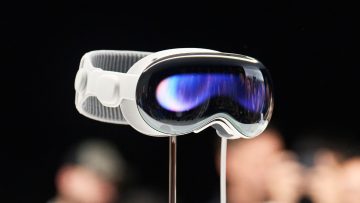Scientists have for the first time detected oxygen on a comet, a finding that could upend theories about how the solar system was formed.
Reporting their findings in the journal Nature on Wednesday, an international team said that they detected “a lot” of molecular oxygen in the cloud of gas, or coma, surrounding the nucleus of comet 67P/Churyumov–Gerasimenko.
While molecular oxygen has been found in Jupiter and Saturn, it’s never been found on a comet. The neutral gas comas of most comets are composed largely of water, carbon monoxide and carbon dioxide.
Related: Philae’s comet may host alien life, scientists say
“It is the most surprising discovery we have made so far in 67P because oxygen was not among the molecules suspected in a cometary comas,” Kathrin Altwegg, one of the co-authors on the paper from the University of Bern, told reporters during a press conference Tuesday.
“The first time we saw it I think we all went a little bit into denial because it was not expected to be found in a comet,” she said. “Molecular oxygen is very reactive. There was a lot of hydrogen around when the solar system was formed. Everybody and all models showed that molecular oxygen would react with the hydrogen and would no longer be present as molecular oxygen.”
Once they detected the oxygen, the researchers studied the comet for several months and concluded it was present “ in the whole body,” according to University of Michigan’s André Bieler, another co-author on the study.
Related: Rosetta discovers that ice on comet disappears in regular cycle
“The fact that it’s in the whole body led us to the idea that it was primordial so the O2 must have been present at the formation of the comet,” Bieler said.
But how did it form and manage to stick around for billions of years?
Bieler said the international team considered two theories – either the oxygen was in the gaseous phase and endured a “shock freeze” or the oxygen was built onto the icy grains.
The researchers said the first theory was probably unlikely because “gaseous O2 has only been detected twice outside of our solar system.”
Related: European space probe makes rendezvous with comet after decade-long chase
“If you freeze it out very slow in the grains it will react with hydrogen and transform into water ice,” Bieler said. “The other way to build up O2 is on these grains. We came up with the idea that it could happen through radiolysis, a common effect that is known in the solar system on other icy bodies and in the rings of Saturn.”
If the second theory holds up, Bieler said it would indicate that the comet was “a very pristine object.”
Ever since the Philae probe landed on the comet in November, scientists have made several startling discoveries. Through extensive data collected by the Rosetta spacecraft that is orbiting the comet, scientists have concluded that asteroids, not comets, may have provided most of Earth’s water in the early years of the solar system. They also suggested the comet may host alien life.
Now, it could force scientists to reconsider how the solar system was formed.
Related: A look at key moments in the Rosetta space probe’s 11-year journey to link up with comet 67P
Scientists have long theorized the solar system formed about 4.6 billion years ago when a cloud of stellar dust collapsed – possibly as the result of a star exploding nearby. It fell in on itself, creating a disk of material surrounding it. The pressure of all this material became so great that the hydrogen atoms fused into helium, releasing a tremendous amount of energy and forming our Sun.
“Our study merely suggests that our current models [of the solar system] most probably are not right,” Bieler told FoxNews.com in an email.
“One thing that we challenge is the current idea that there is a lot of mixing going on in the protoplanetary disk during formation,” he said. “In that case, a lot of material is transported inwards in the disk to regions closer to the (proto) sun. This can not have happened to the ice in 67P that now releases the O2.”
More FoxNews.com Tech:




